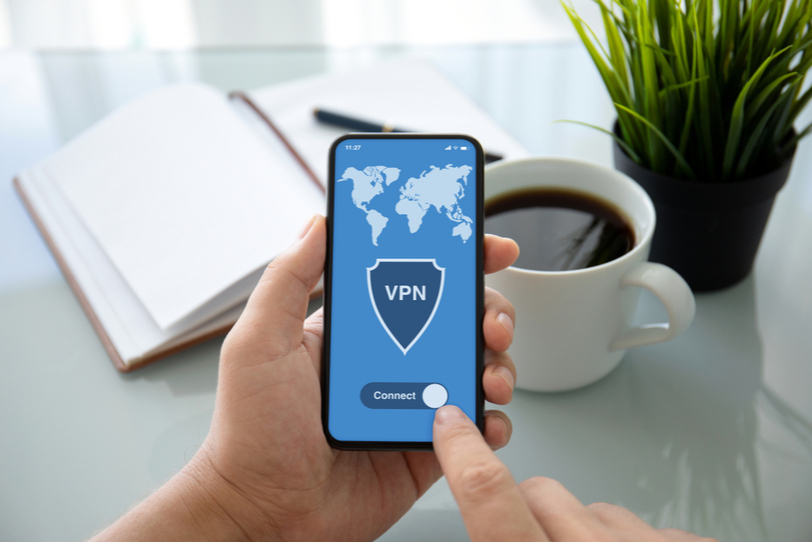
Nowadays, VPNs are used everywhere to establish network security for users. These VPNs are used mostly used by European and American Countries so that they can privately access the network thus hiding their activity to other users. Before knowing the setup process, first, we must know what a VPN is, why do we need it, where can it be used, and so on.
What is a VPN?
VPN or Virtual Private Network is used to extend a private network across a public network, enabling the users to send data, receive data across public or shared networks, maintaining the assumption that their computing devices are directly connected to the private network.
In other words, we can say that we can create our own private network through a security tunnel while still accessing the public or shared network.
Why VPN?
A Virtual Private Network, or simply VPN is a very useful technology hack that can be used to mask your activity in the public or shared network. In fact, by setting up a VPN, you set up a tunnel between you and the network with no intermediate processes or other network protocols. Moreover, by using a VPN, we can ensure that data security is maintained. Also, by masking our activity, we can ensure that data encryption is established when we start the VPN network Service.
Setting up a Virtual Private Network (VPN)
A VPN can be set up in almost every computing devices like computers, laptops, smartphones, tablets, etc. by following certain steps.
Setting up a VPN in Windows 10
To set up a VPN in Windows 10, the following steps are taken so that the VPN is set properly. The steps involved in the setting up of the VPN are as follows:
- Step 1: Go to your windows startup screen
- Step 2: Type “VPN” in the search box
- Step 3: Then select the option “Change Virtual Private Network”
- Step 4: Then select the option “add a VPN connection
- Step 5: Fill in the details that will pop up in the screen and save it. In the VPN provider dropdown select the option of “Windows (Built-in).
- Step 6: To confirm that your VPN is created, click the WiFi option and you will see the VPN created by you
Setting up a VPN on Android
Setting up a VPN in Android is easier when compared to setting up a VPN in Windows. The steps for setting up a VPN in Android are as follows:
- Step 1: Unlock Your Phone
- Step 2: Open the “Settings” App
- Step 3: Under the “Wireless & Networks” section, click “More Settings”
- Step 4: Select “VPN”
- Step 5: On the top-right corner, you will find a “+” sign. Tap that sign
- Step 6: Your Network Administrator will provide you with all your VPN Information.
- Step 7: Select the desired protocol you want to set your VPN up with and enter all the information.
- Step 8: Hit the “Save” option
- Step 9: You can connect by going back to the “VPN Settings” and select the VPN of your choice. You will be asked to enter a username and a password.
- Step 10: To keep the “VPN Connection” as always “ON”, you can hit the three-dot menu button to set up your VPN to be always on.
Setting up a VPN on macOS
Setting up a VPN Connection in macOS is the easiest when compared with Windows or Android. The steps to set up a VPN Connection in macOS are as follows:
- Step 1: On your Mac, choose Apple menu -> System Preferences, then click Network.
- Step 2: Select your VPN service in the list on the left.
- Step 3: If there’s a Configuration pop-up menu, click it, then choose a configuration. There may be only one configuration available.
- Step 4: Click “Connect”
Advantages and limitations of using a Virtual Private Network
Using a Virtual Private Network has its own advantages and limitations as well. Some of the important benefits or advantages of using the Virtual Private Network are given as follows:
- Improved Security
- Remote Access
- Very cheap in cost
- Used to buy cheap flight tickets
- Maintaining Anonymity or Bypass Restriction
These are some of the real-world advantages and applications where Virtual Private Networks can be used.
Conclusion
To conclude, we can say that using a VPN may sound easy but the process behind setting things up to use the VPN is tedious. If we know the process behind using the VPN, then we can use it to the fullest with no restrictions but with limitations to speed of data transmission, sending and receiving of data packets, etc.
Contact us today to learn about Bleuwire™ services and solutions in how we can help your business.





